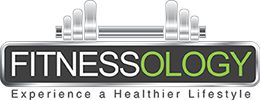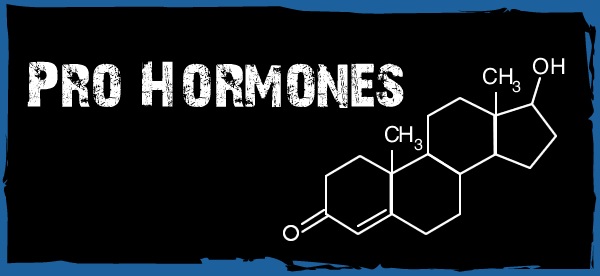Hormone Replacement Therapy
Prohormonese
(Note: Prohormones Are Now Illegal and Classified as Anabolic Steroids as of Dec. 18th, 2014)
Select our Steroids Profile category , www.fitnessology.net/blog for a comprehensive list of Prohormones and their profiles!
Prohormones are powerful anabolic compounds that have been the subject of debate and controversy for many years. The prohormone market first gained steam in the late 1990’s, largely thanks to individuals such as chemist Patrick Arnold and the media hysteria surrounding Mark McGwire’s bottle of Andro (androstendione). Although originally legal, prohormones have seen numerous roadblocks, and manufactures have discovered many loopholes and gray areas of the law. Such loopholes have kept these anabolic supplements on the shelves at every retailer; that is until now. In early December of 2014, the United States Congress dealt its final blow to the prohormone market effectively making any and all current and future prohormones or designer steroids illegal for sale or purchase.
What are Prohormones?
Prohormones are anabolic androgenic steroid precursors. In short, these substances are not anabolic steroids, but once ingested convert to produce an anabolic steroid action. However, while this is the purpose of a prohormone, some supplements that carry the prohormone label have been nothing but an anabolic steroid that requires no conversion. The popular Superdrol is perhaps the best example of a steroid being labeled a prohormone.
Because prohormones were not part of the Steroid Control Act of 1990, many athletes and bodybuilders have opted for the legal route in order to stay within the safety of the law. And prohormones work, they can work very well. Rarely will a prohormone have as strong as an effect as a true anabolic steroid, but because of the legal comfort provided, they proved to be a suitable choice for many men. However, with the passage of the 2014 Designer Anabolic Steroid Control Act of 2014 (HR 4771), this comfort zone no longer exists. Sale or purchase of prohormones in the United States will result in fines and/or jail time
The End of Prohormones:
In 2004, the U.S. congress enhanced the already strict Steroid Control Act of 1990 with the Steroid Control Act of 2004. The 2004 legislation stiffened the already stringent steroid laws, but it was its accompanying prohormone legislation that was its largest accomplishment. Numerous hormones and precursors were added to the Controlled Substance list; however, this ban proved to be weak in the end. Each and every year, supplement manufactures would alter their compounds. One could take a banned precursor and alter it slightly, thereby creating a new and legal substance. In time, such substances would find themselves on the banned list as well, but as soon as they did a new one was around the corner.
Enter the 2014 Designer Anabolic Steroid Control Act of 2014 – the updated legislation signed by President Obama and unanimously passed by congress has effectively closed all loopholes left open by the 2004 Act. No longer is enforcement of prohormone law in the hands of the FDA, but HR 4771 has given all authority to the DEA. The new legislation adds twenty-five (25) compounds to the Controlled Substance list, but more importantly makes it impossible for new substances or compounds to be created.
Originally, when a substance came under fire it was up to the FDA to prove that the accused substance carried or created anabolic steroid like action. The new law now puts the burden of proof on the manufacture. The U.S. Justice department has been given the power to add any substance to the list at any time, and it is up to the manufacture to prove it is not an anabolic substance. This is a nearly impossible for any manufacturer of prohormones as the law states “a drug or hormonal substance (other than estrogens, progestins, corticosteroids, and dehydroepiandrosterone)…derived from, or has a chemical structure substantially similar to, 1 or more anabolic steroids listed in (the new list of banned substances in Appendix 1) shall be considered to be an anabolic steroid for the purpose of this Act.” In simpler terms, the past legislation required that the substance carry a similar chemical relation to testosterone, and then it had to be proven to be anabolic. HR 4771 only requires that the substance be chemically related, even a slight relation is enough to see it banned and the manufacturer and retailer jailed. The DEA does not have to prove the substance is anabolic.
- Violators of HR 4771 face some of the harshest penalties seen in the war on steroids:
- Manufacturers & Distributors: $500,000 fine per violation
- Retailers: $1,000 fine per violation
“(C) In the case of a violation of paragraph (16) of subsection (a) of this section by an importer, exporter, manufacturer, or distributor (other than as provided in subparagraph (D)), up to $500,000 per violation. For purposes of this subparagraph, a violation is defined as each instance of importation, exportation, manufacturing, distribution, or possession with intent to manufacture or distribute, in violation of paragraph (16) of subsection (a).” – Sec. 3 – subsection (c)(1)(C)
“(D) In the case of a distribution, dispensing, or possession with intent to distribute or dispense in violation of paragraph (16) of subsection (a) of this section at the retail level, up to $1000 per violation. For purposes of this paragraph, the term at the retail level refers to products sold, or held for sale, directly to the consumer for personal use. Each package, container or other separate unit containing an anabolic steroid that is distributed, dispensed, or possessed with intent to distribute or dispense at the retail level in violation of such paragraph (16) of subsection (a) shall be considered a separate violation.” – Sec. 3 – subsection (c)(1)(D)
Full List of Substances Added by HR 4771

